The phenomenon of infant colic has long perplexed parents and healthcare professionals alike, often leaving caregivers in a state of distress as they seek effective strategies to soothe their fussy infants. One particularly concerning trend among colicky babies is a noticeable preference for sleeping on their stomachs, a position that raises significant safety questions given established guidelines advocating for supine sleep to mitigate the risk of Sudden Infant Death Syndrome (SIDS).
This article explores the complexities surrounding colic, the implications of stomach sleeping, and offers evidence-based safe sleeping tips that can help navigate this challenging landscape. By examining the underlying causes of colic and the physiological factors influencing sleep preferences, we aim to provide parents with a comprehensive understanding of how to create a secure sleep environment while addressing their baby’s unique needs.
Understanding Colic in Infants and Its Impact on Sleep Patterns

Colic, often characterized by excessive crying and irritability in infants, typically manifests in the early weeks of life and can last until around three to four months of age. The condition is thought to be caused by a combination of factors, including gastrointestinal discomfort, immature nervous system development, and heightened sensitivity to stimuli. Understanding these elements is crucial, as they not only affect the baby’s behavior but also significantly disrupt sleep patterns. Parents may find themselves struggling as their colicky infants exhibit difficulty falling asleep and staying asleep, leading to cycles of frustration and exhaustion.
To mitigate the impact of colic on sleep, adopting a series of safe sleeping strategies is essential. Consider the following approaches:
-
- Create a calming bedtime routine: Establish a consistent pre-sleep routine that includes soothing activities like gentle rocking or soft lullabies.
-
- Optimize the sleep environment: Ensure the nursery is conducive to sleep by keeping the room dark, quiet, and at a comfortable temperature.
-
- Monitor feeding schedules: Pay attention to feeding times and amounts, as overfeeding can exacerbate discomfort and disrupt sleep.
-
- Swaddling: Proper swaddling can help infants feel secure and reduce the startle reflex that may wake them.
It’s also worth noting the delicate balance between safe sleep practices and comforting a colicky baby. While some parents may feel inclined to position their infant on their stomach for sleep due to momentary comfort, it is vital to adhere to guidelines provided by pediatric health professionals to reduce the risk of Sudden Infant Death Syndrome (SIDS). Here’s a comparative look at sleep positions and their associated risks:
| Sleep Position | Safety Level | Impact on Colic |
|---|---|---|
| Back | Safe | Recommended for reducing SIDS risk but may require more soothing techniques for colic. |
| Side | Not Recommended | Potentially unsafe as infants may roll onto their stomachs. |
| Stomach | Unsafe | Provides temporary relief but significantly increases SIDS risk. |
The Risks of Stomach Sleeping: Safety Considerations for Parents
While many parents find that their colicky baby sleeps only on their stomach, it is imperative to emphasize the potential risks associated with this sleeping position. Research has consistently shown that stomach sleeping significantly increases the likelihood of Sudden Infant Death Syndrome (SIDS). This alarming statistic underscores the need for parents to carefully consider their infant’s sleeping arrangement. Some key risks associated with stomach sleeping include:
-
- Reduced Airflow: Babies sleeping on their stomachs may face challenges in breathing due to a blocked airway.
-
- Overheating: This position can increase the chances of overheating, which is another risk factor for SIDS.
-
- Less Responsive to Disturbances: Infants may be less likely to wake up in response to distress signals when sleeping on their stomach.
To mitigate these risks while addressing the challenges of a colic baby, parents should be informed about safe alternatives and guidelines. For instance, placing the baby on their back during sleep is crucial, and offering comfort measures such as gentle rocking or swaddling can be beneficial. Additionally, establishing a safe sleep environment is vital—keeping the crib free from soft bedding, pillows, and toys can reduce risks. Consider the following recommendations:
| Recommendation | Description |
| Back Sleeping | Always place the baby on their back for every sleep. |
| Firm Sleep Surface | Use a firm mattress without soft bedding. |
| Room Sharing | Keep the baby’s crib in your room for the first 6 months. |
Implementing Safe Sleep Practices for Colicky Babies
When dealing with a colicky baby who prefers to sleep on their stomach, it is essential to prioritize safe sleep practices to reduce the risk of Sudden Infant Death Syndrome (SIDS). Always place your baby on their back for sleep, as this is the safest position recommended by pediatricians. However, to help manage colic while adhering to safety guidelines, consider implementing the following strategies:
-
- Swaddling: Wrap your baby snugly in a light blanket to provide comfort and mimic the womb environment.
-
- White Noise: Use a white noise machine to create a soothing atmosphere that may help calm your baby.
-
- Elevate the Crib Mattress: Slightly elevating the mattress can help with reflux, which may reduce discomfort during sleep.
-
- Monitor Sleep Environment: Keep the crib free of pillows, blankets, and toys to ensure a clear and safe sleeping space.
To further enhance sleep safety for a colicky infant, be mindful of the baby’s sleep schedule and cues. Establish a consistent bedtime routine that includes calming activities, such as gentle rocking or a warm bath, which can ease the transition to sleep. It is also beneficial to maintain a comfortable room temperature and ensure proper ventilation. Use the table below to summarize key points for safe sleep:
| Practice | Description |
|---|---|
| Back Sleeping | Always place your baby on their back to sleep. |
| Swaddling | Wrap baby in a light blanket for comfort. |
| Consistent Routine | Establish calming pre-sleep activities. |
| Safe Environment | Keep the crib free of soft items and maintain a stable temperature. |
Alternative Strategies to Promote Healthy Sleep in Infants
Promoting healthy sleep patterns in infants can often require creative and safe solutions, especially for those experiencing colic. One effective approach is to establish a consistent bedtime routine that signals to the baby that it is time to wind down. Parents can incorporate soothing activities before sleep, such as gentle rocking, soft lullabies, or a warm bath. These practices help to create an environment that is conducive to relaxation and can make the transition to sleep more comfortable. It is also essential to maintain a calming atmosphere in the nursery, utilizing soft lighting and minimizing noise to foster a tranquil environment.
Additionally, positioning during sleep is crucial for both comfort and safety. While some parents may find that their baby sleeps better on their stomach, this position poses significant risks. To ensure safe sleep, consider the following alternatives:
| Safe Sleep Alternatives | Description |
|---|---|
| Back Sleep Position | Encourages optimal airway alignment while minimizing the risk of SIDS. |
| Swaddling | Provides a sense of security and comfort, reducing startle reflex. |
| Side Sleeping | Should only be considered with caution and under supervision, to transition to back sleeping. |
Incorporating these strategies, coupled with a safe sleep environment, can significantly improve the quality of sleep for infants while ensuring their safety. Monitoring the baby’s responses and gradually adapting the strategies will also aid in finding the best approach for promoting restful sleep amidst the challenges of colic.
In Conclusion
while it is understandable for parents to seek solace in the comforting embrace of a stomach-sleeping position for their colicky infants, it is imperative to prioritize safety in sleep practices. The evidence underscores the enhanced risk associated with prone sleeping, particularly regarding sudden infant death syndrome (SIDS). Therefore, caregivers are encouraged to explore alternative measures that can alleviate colic while adhering to safe sleep guidelines.
Techniques such as swaddling, creating a soothing environment, and implementing consistent sleep routines may provide relief without compromising safety. As research continues to evolve, staying informed and consulting healthcare professionals remain crucial steps for parents navigating the complexities of infant care. Ultimately, fostering a safe sleep environment is not only an act of love but a fundamental responsibility that can promote better outcomes for both infants and their families.


